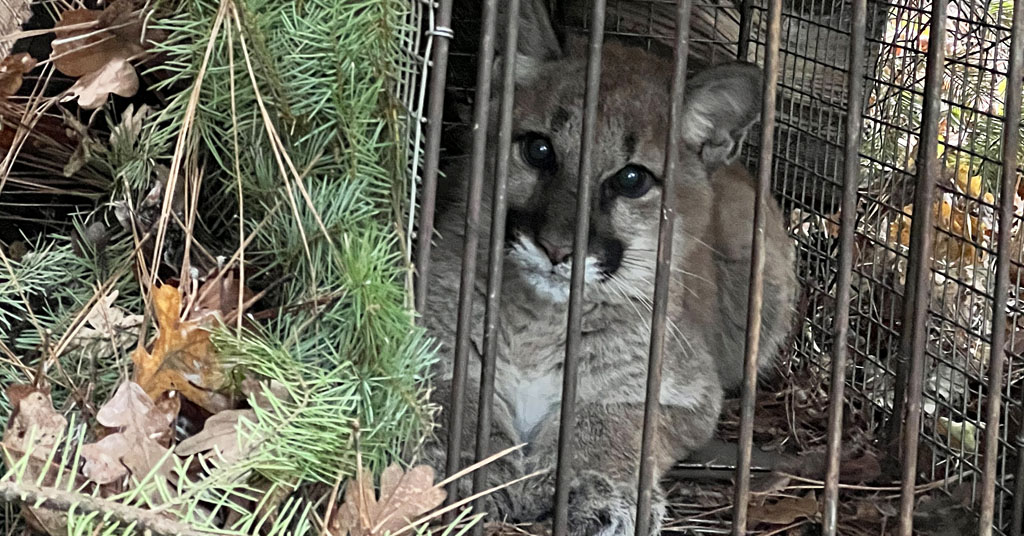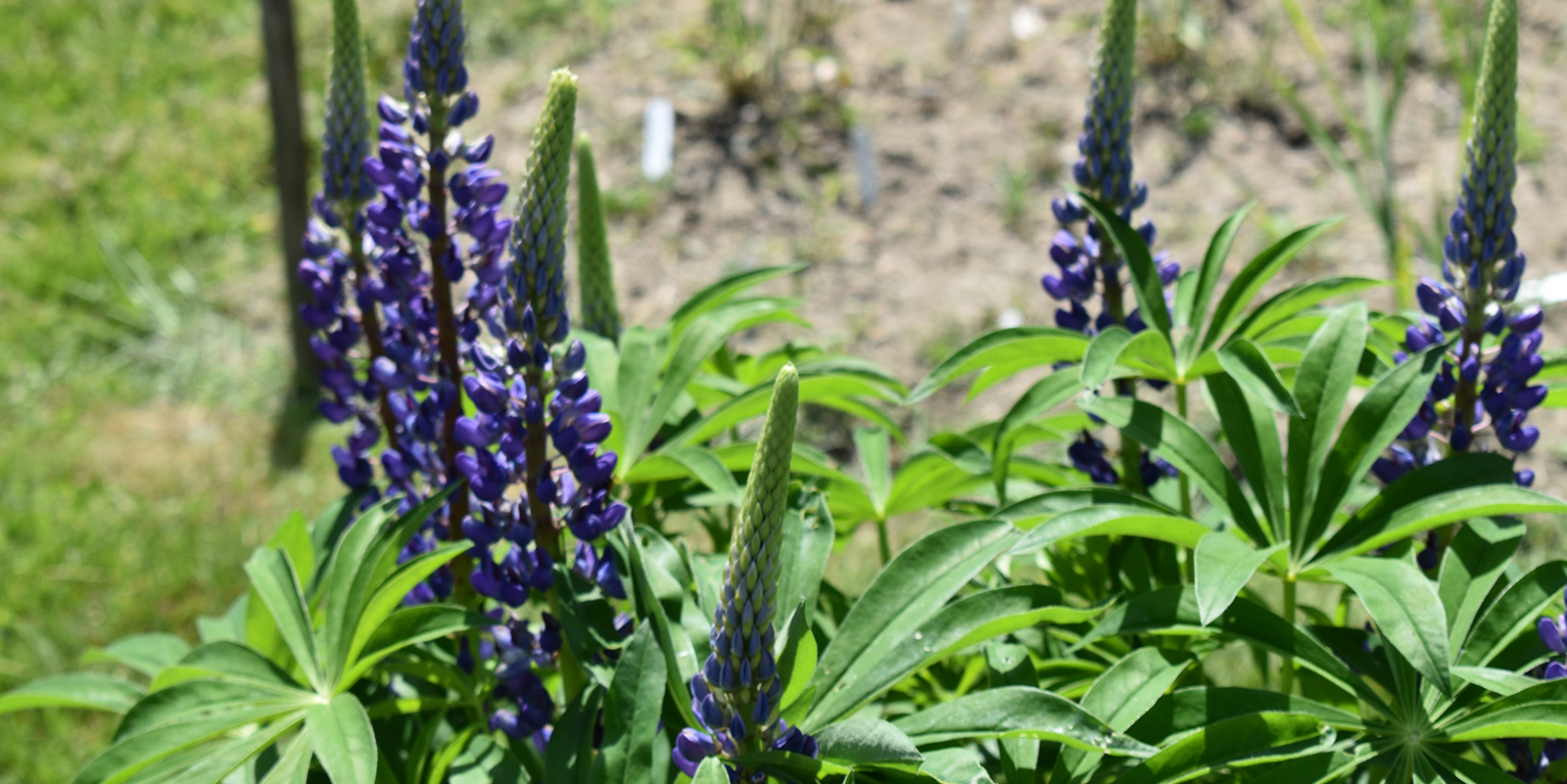Declining Orchid Populations Need Forested Protection
August 8, 2019
A short way down a path in the Arcadia Wildlife Management Area in Exeter, R.I., Hope Leeson strolled into a dry, overgrown meadow in search of a rare orchid called spring ladies’ tresses. The species is known from just three sites in Rhode Island, and when this particular population was checked last, there were just 25 plants growing there.
After wandering around for 10 minutes, she stumbled upon a single foot-tall specimen. A short time later, she found a patch of seven more hidden from view by tall vegetation. Each featured tiny white flowers spiraling around the top of the stalk.
“The flowers spiral like that to better present themselves to their pollinators,” said Leeson, a botanist for the Rhode Island Natural History Survey. “But they’re getting lost in all these other plants.”
Despite searching the 1-acre site for another 20 minutes, Leeson found no more orchids. Her experience wasn’t unexpected.
Spring ladies’ tresses is one of 40 kinds of orchids found in Rhode Island and one of 34 that are on the state’s list of rare species. Many appear to be declining in number, based on recent efforts to find them, and nine of them haven’t been seen for so long that they are considered historic.
“Rhode Island’s orchid populations seem to be shrinking,” said Doug McGrady, an amateur botanist who spends all of his free time wandering the state in search of rare plants. He was the last person to report on the Arcadia population of spring ladies’ tresses, in 2017.
“In other states, orchids are more plentiful and you might find hundreds of them in a patch,” McGrady added. “But when you find a patch here, ours are always smaller. And it doesn’t always seem like there’s a logical explanation why.”
According to Leeson, orchids are rare for numerous reasons. Many species have very narrow habitat requirements. They also require a particular kind of fungal community in the soil in order for their seeds to germinate and for the plants to gather nutrients, and that fungal community is unique to each species. If the soil gets disturbed, the fungal community can become disrupted. Many orchids also produce only one flower, so their chances of reproducing are minimized.
The plants also are rare because of habitat loss and because deer eat them before they have a chance to produce seeds. Changing environmental conditions are also likely having an impact.
“In looking through the records of the orchids that bloom this month, a lot of those recorded in the 20th century haven’t been found recently because the habitats have been lost,” Leeson said. “They’re now housing developments and gravel pits. Humans have moved in.”
Little is being done to conserve the many rare orchids in Rhode Island.
“We do not currently have a dedicated formal effort to monitor or sustain orchids,” Tanner Steeves, a wildlife biologist with the Rhode Island Department of Environmental Management, wrote in an email. “However, we certainly attempt to care for, and perhaps more importantly, avoid negative impacts to orchids where we are aware of them on DEM land under our Division’s supervision … Going forward we are planning to submit a State Wildlife Grant proposal to fund pollinator-related management in the absence of state funding. This grant may cover management activities devoted specifically towards benefitting rare plants, including orchids, due their importance for supporting insect biodiversity.”
The rarity of orchids — along with their intricate floral structure — are among the reasons why many people are so enamored of them.
“There is something magical about them that makes people nuts,” McGrady said. “I like them in part because other people think they’re precious. And I like that they’re something unusual and they’re usually attractive.”
Leeson continued down the path at Arcadia for about half a mile, then walked a short distance along the edge of a muddy stream in search of a population of lesser purple fringed bog orchids, another rare species known in Rhode Island from just nine sites in the West Bay. Pollinated by small butterflies called skippers, the beautiful plant displays showy purple or magenta flowers with fringed petals.
She found just one plant where McGrady observed five — four of which had been eaten by deer — in 2011.
But just 12 feet away from the solitary lesser purple fringed orchid, Leeson discovered a group of five small green woodland orchids, a variety added to the state’s rare species list in 2016 and one that hadn’t previously been observed at the site. It’s a species Leeson had only seen once before in Rhode Island, along a woodland stream in Westerly.
Earlier that day, at the Great Swamp Management Area in South Kingstown, Leeson located a population of more than 100 white fringed bog orchids, a showy species found at four sites in the state. Growing up to 3 feet tall, it prefers open habitat to attract pollinators to what Leeson called its “landing pad,” the bottom petal where night-flying moths land seeking nectar.
Despite the state’s somewhat large population, Leeson is concerned that the surrounding vegetation was growing so tall that it would soon crowd out the orchids, just like what appears to be happening at the site of the spring ladies’ tresses in Arcadia. At both sites, Leeson said, the orchids would benefit from the clearing away of some of the larger vegetation.
“There is this great allure of finding orchids and the beauty of them, but we don’t really understand much about their ecology — how they fit into their habitat, what their role is and the role of the other plants in the community, and about the fungal community specific to each habitat,” she said.
Leeson and McGrady are volunteers with the New England Plant Conservation Corps, managed by the Native Plant Trust — formerly the New England Wild Flower Society — in Framingham, Mass., which dispatches plant enthusiasts to check up on rare plant populations throughout the region. Volunteers count individual plants, record their stage of growth and other species growing with it, and note any invasive species growing in the vicinity.
“There’s not much happening to protect orchids in Rhode Island, other than the volunteer work monitoring where they’re located,” Leeson said. “Orchids are difficult to propagate, but the Native Plant Trust is working to propagate rare orchids so they can be used to augment populations if necessary. But it’s a steep learning curve.
“The best places to find orchids are in large forested tracts, especially large forests with a mosaic of bogs and wet meadows and woodlands. So the best thing we can do to protect orchids is to place a greater emphasis on the protection of large forested areas.”
Rhode Island resident and author Todd McLeish runs a wildlife blog.




Considering the state of the world all forests need to be much better protected if humanity is to have half of chance of getting through the rolling climate catastrophe.
The deer population here on eastern Long Island has exploded in the last twenty years and the same is been happening there in RI since I’ve relocated. It is as much if not more of a cause of population loss as habitat. The overwhelming influx of invasive species is also a distinct threat.